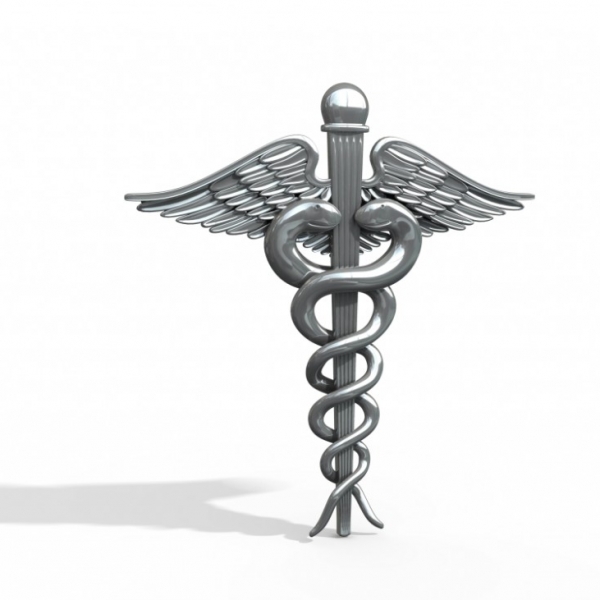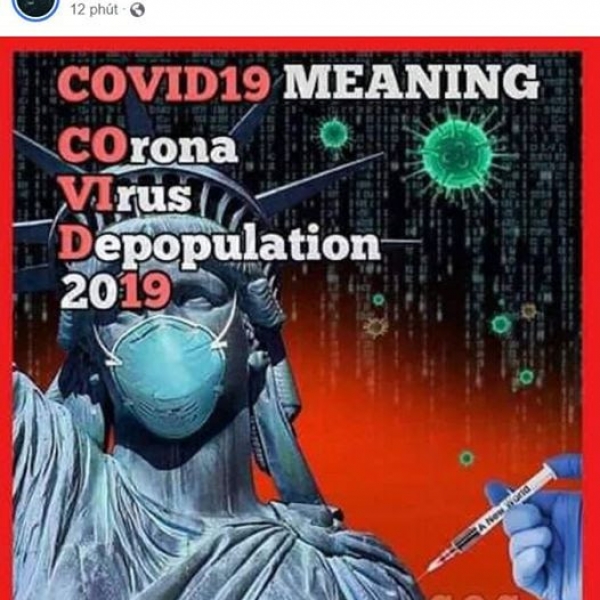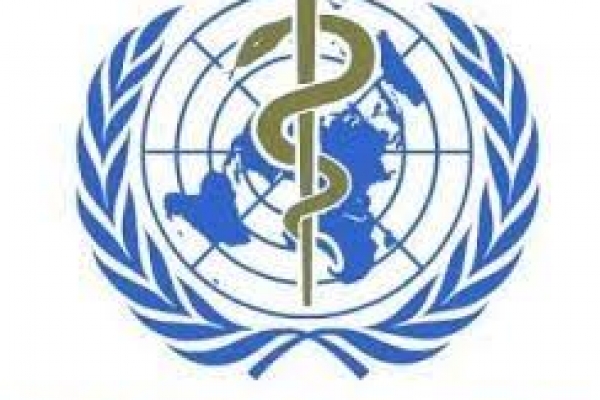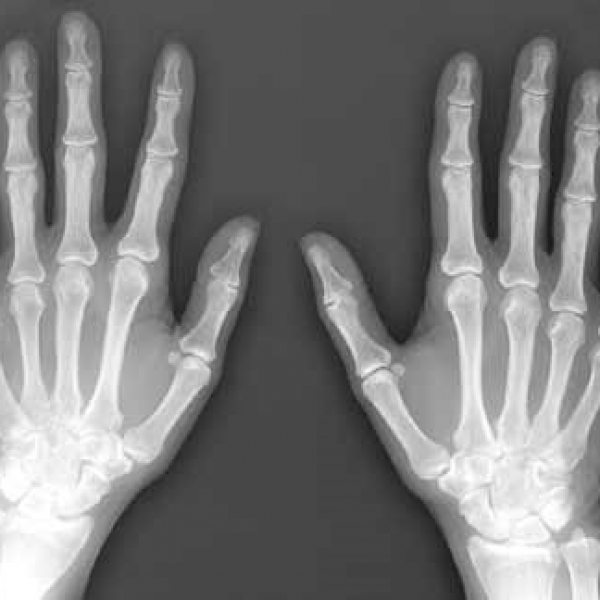Contact Admission
International Collaboration
Things to know about COVID-19 and the agent SARS-CoV 2
Dear readers,
COVID-19 and agent SARS-CoV 2, are becoming a global obsession, as the number of cases, the number of deaths, the number of countries and regions where patients are infected are increasing hour by hour. day. In order for our readers to have a comprehensive, accurate, up-to-date look at the latest news on this virus, this month's Symposium page will be devoted to COVID-19 and the agent SARS-CoV 2, from the perspective of experts, doctors in each related field.
Has Coronavirus been reported to cause illness in humans in the past?
Coronavirus is a virus that mainly infects wild animals, including domestic animals such as pigs. However, since 1962, strains of coronavirus that cause common cold have been detected in humans and this coronavirus is still occasionally detected from patients. In 2003, there was a line of coronavirus causing severe acute pneumonia in humans that we call SARS (Severe Acute Respiratory Sydrome) and in the elderly over 65 years old, the mortality rate was up to 50%. The causative agent of SARS has been identified as a strain of coronavirus (today known as SARS-CoV) derived from civet and the epidemic originating in Guangdong, China. Fortunately, thanks to the efforts of the health sector in the world, this disease was stopped and disappeared in July 2003 after causing disease in 8422 with 916 deaths (11% mortality). Then in September 2012, another major respiratory infection was discovered mainly in the Middle East and the agent was also identified as a coronavirus (today known as MERS-CoV) of camel origin. and probably transmitted by a blood-sucking bat. As of December 2019, the world had 2468 cases of Middle East pneumonia with 851 deaths (relatively high rate of 34.5%). This unknown disease has disappeared yet, so medicine is still very vigilant.
From December 2019, in Wuhan city in China (China), an outbreak of acute pneumonia again broke out, and not long after, scientists identified the cause as a new strain of coronavirus that today named as SARS-CoV 2 (the reason for this designation is because the virus's genetic apparatus is very similar to the virus that causes SARS) originated from the bat. This epidemic is today named COVID-19 (Coronavirus disease 2019). As of February 27, 2020, according to data published by the World Health Organization (WHO), COVID-19 has spread throughout China with a total of 78,630 identified cases (mortality is 2747). . Not only that, the disease also spread to 46 countries with 3664 people infected with 57 deaths, especially with 4 countries recorded as outbreaks, but South Korea with 1766 infected (13 died), Japan with 186 infected (3 deaths), Italy with 400 infected (12 deaths), Iran with 141 infected (22 deaths). Particularly in Vietnam, up to now, 16 people have been identified and no deaths have been reported. In terms of mortality, the overall rate is 3.6% in China, 1.6% outside of China, but mainly in Iran (15.6%) and in other countries the death rate is very low. In China, according to statistical analysis, mortality is mainly in the old age group and there is a background disease such as diabetes, cardiovascular disease, respiratory disease and death not directly caused by the virus, but because the underlying disease becomes progressive. more serious.

How COVID-19 spreads and how to prevent it
Why SARS-CoV 2 from bats to humans is still a mystery that scientists have yet to find scientific evidence. It could be that someone ate an infected bat, got the virus and got sick. It can also be transmitted through an intermediate host. Once infected, the virus will spread from person to person through droplets shot from an infected person coughing or sneezing out and then directly into others through the nose or mouth. The reason why SARS-CoV 2 is only present in large or medium droplets when an infected person coughs or sneezes, it is because like the coronavirus that causes SARS or other coronaviruses, SARS-CoV 2 is quite large (165nm). so can only be on large and medium droplets, not in droplets to fly as far in the air as influenza virus (size 65nm). That is why we can prevent this infection with a mask covering the nose and mouth is enough. Any mask is fine, medical is fine, N95 or 3M is fine, multi-layer fabric masks are fine, even homemade multi-layered masks are fine. The main thing is to stop the drops of the other person or go ahead coughing, sneezing, spitting clinging to. In addition, wearing a mask has an even more important meaning, which is to prevent us from accidentally getting sick and coughing, sneezing and splashing on others. Currently we wear masks in the habit of being dustproof, not anti-epidemic. If a mask is worn, the mask cannot be reused, and while wearing and removing the mask, we must not allow our hands to touch the front of the mask. If done so, we must use at least 3 masks every day, and with the current scarcity of masks, how do we have enough masks to use? Therefore, we think that if there is really an epidemic going on in the community, we should refrain from going out or going to public places. If you have to go out, you must use a mask properly. In addition to a mask, a very important way to prevent the spread of infection is to wash your hands frequently as hands are the most important source of infection. Hands infected by coughing or sneezing through the mouth will infect materials that are handled by the sick person such as doorknobs, such as door knobs, elevator buttons, intimate handshakes, daily household cups and glasses Hospitals or restaurants, hotels ... and from there on to infect others because they will touch these places ... then accidentally bring it to their mouth through the mouth, through the mouth, through eating ... That's why the method of washing hands is often After going out to public places, hospitals, hotels, cafes ... is essential to avoid infection that we must pay attention to and implement thoroughly when epidemic occurs. Coronavirus is very easy to kill by 70% alcohol, alcohol mixed with isopropanol, or adding chlorhexidine all kill coronavirus. Even washing your hands with soap and clean water is enough to stop this infection.

Mechanism of pneumonia of COVID-19 and clinical evidence for identification
The agent that causes COVID-19 penetrates the cells of the respiratory tract mucosa because their spiny structures attach to the ACE2 receptors on the surface of the cells of the lower respiratory tract mucosa and then enter the cell, releasing Their RNA for synthesizing viral components and then into complete viruses. Therefore, the virus has damaged the respiratory mucosal cells to cause disease, mainly pneumonia. There has been no documented mechanism of pathogenesis of the type SARS, ie, pulmonary parenchymal destruction by storming cytokines from the body's excessive immune response. However, there are also severe cases that can lead to death, especially in elderly patients with underlying respiratory, cardiovascular, or metabolic disease. Most cases heal after 7 to 14 days of hospital treatment. Recovery means that the patient has antibodies and no longer presence of virus in the respiratory tract through real-time PCR test results performed for 2 consecutive days.
The most common clinical signs of pneumonia caused by COVID-19 are cough (usually a lot of cough), fever, soreness, possible diarrhea, more severe cases may be difficulty breathing and chest pain. . However, these signs can also appear in pneumonia caused by other viral agents or even bacterial agents. Therefore, based on clinical symptoms alone to identify a person with COVID-19 pneumonia is not possible. Pneumonia can only be identified as COVID-19 when SAR-CoV 2 is detected by test results of throat swab, posterior nose swab, or acute sputum or blood. standard.

Principles of treating pneumonia COVID-19
In fact, there is currently no specific antiviral treatment for COVID-19. There is also ongoing clinical trial using Remdesivir, an analogue of the nucleotides with a mechanism that prevents viruses from synthesizing their RNA. Chloroquine has also been noted for its mechanism of preventing viruses from translating RNA for the synthesis of their proteins. However, all are only in the research circle and so far there is no drug approved by the FDA.
Thus, the treatment of pneumonia COVID-19 is based on the following principles: (1) Supportive treatment for patients such as oxygen if breathing is difficult, electrolyte replacement if there is a disorder, and nutritional supplementation if necessary ... (2) Monitoring to detect bacterial superinfection for timely antibiotic treatment. In most cases, just the above two solutions will be sufficient.
Diagnosis of pneumonia COVID-19
In fact, to this day many people are still confused about the real-time PCR technique for detecting COVID-19 cause. Why use this technique? Why are only a few laboratories now allowed to answer [+] results? To answer these questions, let me clarify the following:

-
How did scientists detect a coronavirus line named SARS-CoV 2 that is responsible for the epidemic of pneumonia COVID-19?
Previously, in order to discover the cause of SARS, the laboratory had to obtain the lung tissue of the patient who died of SARS and then try to transplant on multiple cell lines to finally select the VERO E-6 cell as the cell. virus-sensitive. Thanks to the culturing of the agent, it is determined that this is the true pathogen, and verified by a specific response to antibodies in the patient's serum through immunofluorescence technology. Then through electron microscopy identified images of coronavirus. From successful culture, scientists have just published the complete genome of the coronavirus causing SARS, now known as the SAR-CoV strain.Today, thanks to technical advances, scientists can identify the agent causing Wuhan pneumonia very early without having to go through culture. It is a metagenomic technique performed on a vehicle that is a next-generation sequencing machine. Metagenomic is a technique to sequence all the DNA or RNA fragments in a sample and then compare the sequence on the genetic data bank. Thanks to that, it is possible to determine which agent is present in all samples, and even reconstruct the complete genome of this agent. As a result, only after the first cases were reported, the scientists published the complete genome sequence of this coronavirus line (February 17, 2020), without the need to cultivate the virus. Thanks to metagenomic, up to now, more than a few dozen genomes of this coronavirus line have been published on the World Genome Bank (NCBI gene bank), and the official name of this coronavirus line is named SARS- CoV 2.

-
Knowing the genome of SARS-CoV 2 has opened up a definitive diagnostic window for COVID-19 pneumonia.
When analyzing the genome of SARS-CoV 2, scientists found that there is a very special feature, which is very convenient for the implementation of the test to detect this agent. That is the genome of SARS-CoV 2 is very stable, there is no difference between samples taken from different patients or different geographic regions, including different countries. This means that SARS-CoV 2 has no types or subtypes. Therefore, if a reputable center has researched and designed primers and probes for real-time PCR technology to detect SARS-CoV 2, these primers and probes can be completely applied to Other laboratories around the world. That is why WHO and CDC publish these primer sequences and probes on their website. The labs can e-mail the sequences to the bait and probe companies and will have them on hand in no more than 10 days for less than $ 500 for thousands of test tests.What is Real-time PCR and why is it recommended by WHO and CDC for the definitive diagnosis of COVID-19
With the classic microbiological technique, the gold standard for identifying a microorganism as a pathogen is to cultivate and identify this agent in the specimen. However, for agents that cannot be cultivated routinely, laboratories have to give up or be forced to send them to large research laboratories with culture facilities.Nowadays, thanks to a special technique, real-time PCR, this gold standard is completely feasible, but instead of culturing the pathogen, it is cultured DNA or RNA fragments. the specificity of the agent is present in the specimen. If in normal culture, nutrient media or cells (if viruses) are used to grow from some of the agents present in the specimen to a population and then identify; In real-time PCR, primers are used to amplify pathogen-specific nucleic acid fragments in a sample from several segments into millions or billions of identical segments and detect them by fragments. specific detector. Therefore, without the need for culture, it requires many means, sometimes it has to be done in the third-level biosafety laboratory. With real-time PCR, only real-time PCR means, which is safe. biological level 2 and having sufficient facilities and supplies as recommended by the CDC or WHO to perform this test.

-
How can you ensure the quality of the real-time PCR assay for SARS-CoV 2 performed in the laboratory?
Real-time PCR test to detect SARS-CoV 2 must have two stages and both must be quality controlled. The first phase is that the sample must have high efficiency RNA extraction followed by the introduction of this extracted RNA into a specific amplification and detection by specific primers and probes. Both these stages must be under quality control.For the RNA extraction phase there are two required quality controls, that is to ensure extraction of the intact coronavirus RNA contained in the sample and at the same time extraction of the RNA of the host epithelial cell. For reagents provided by the CDC or WHO that have passed studies on other coronaviruses, this quality control is not required, but quality control for the extraction of epithelial cell RNA. The host is required to demonstrate that the patient has a host epithelial cell, avoiding false [-] results. However, for domestic reagents, these two quality controls are required to ensure that there are no false [-] results due to poor RNA extraction techniques or because the sample does not contain sufficient epithelial cells.
For the amplification stage there must be quality control of the amplification sensitivity, i.e. there must be [+] associated target nucleic acid sequences to determine the detection limit. the lowest possible amplification stage.
-
Why is it that so far only a few laboratories are allowed to publish COVID-19 test results?
In fact, with the primers and probes published by the CDC and WHO, a laboratory that has enough real-time PCR facilities is able to perform this test easily. However, because the answer results can cause confusion if [+] fake or spread the epidemic due to [-] fake, so the state control of this test is completely reasonable.However, due to the epidemic concern, the demand for this testing is quite large, far beyond the capacity of the allowed laboratories. As far as I know, the state management has also studied to allow some laboratories with real-time PCR facilities to perform this test after coming to verify the ability to respond or not. This is good news, but in my opinion also worrisome, if we use a kit that does not have enough quality control that I mentioned above then the risk of [-] false positives, especially the ability to extract and release currently present in the coronavirus sample.

Currently, there is a great need for a COVID-19 test. However, in order to help prevent COVID-19 testing from being overloaded, doctors should only recommend the COVID-19 test in patients with symptoms of pneumonia and weakness. epidemiological factors such as having traveled to or visited epidemic areas, or had contact with sick patients, or sat on an airplane in about 2 seats around the patient. In addition, testing is also possible in pneumonia patients but cannot rule out epidemiological factors. However, according to the current regulations, the clinic cannot give only testing but must refer the suspected patient to a specialized clinic for COVID-19 designated by the government, not take the patient directly. to submit for testing.
Current development of COVID-19
If we look at the graph of COVID-19 disease progression in China, we see that the disease is gradually receding with the number of new cases decreasing. However, the current concern is that there are 4 countries with outbreaks, which are Korea as of February 27 with the total number of people infected up to 1766; Japan 186, Italy 400, and Iran 141. The question is, will COVID-19 become a pandemic?
With the view of the clinical microbiologist, after analyzing the virological properties as well as analyzing the transmission mechanism as well as the pathogenesis mechanism of COVID-19, I would like to give the following opinions:
In terms of contagiousness, COVID-19 has a much higher contagiousness rate than SARS, many times more than SARS. The SARS epidemic, from its inception to its end, has infected 8422 people in 29 territories / countries, while this COVID-19 through February 27 epidemic has infected 84294 people across 47 territories. / country and there may be many other countries on the list of COVID-19 circulating in the future. Why is COVID-19 spreading so quickly? Is it because of the high virulence of the virus? In terms of virulence, SARS-CoV 2 once infected with a patient only directly damages the cells it infects, but does not cause a response to a cytokine storm that destroys lung parenchyma like SARS-CoV. SARS. However, due to its low virulence, there are many patients with COVID-19 whose clinical symptoms are mild, living and living in the community as a source of transmission to many others. While with SARS, the majority have severe clinical symptoms, very easily detected for isolated treatment. Therefore, SARS is more susceptible to restriction and restriction than COVID-19.

- To be considered a pandemic, the disease must spread globally and have a high mortality rate. In order to spread globally, the pathogen must have an airborne transmission mechanism, but COVID-19 agent SAR-CoV 2 cannot be transmitted this way, but only through a droplet and through. direct contact. Another factor is that high mortality COVID-19 has a pathogenetic mechanism that does not cause a cytokine storm to destroy lung parenchyma such as SARS or H1N1, so the mortality rate is not high. Therefore, COVID-19 cannot become a pandemic like the Spanish flu caused by H1N1 in 2018, killing nearly 50 million people worldwide.
Is there a risk that COVID-19 will turn into seasonal flu? To be so, the causative agent must be the human agent and circulate in the human population (eg, the influenza virus, or the coronavirus that causes colds in humans). The agent of COVID-19 is that the strain of SARS-CoV 2 is not human coronavirus but animal's, so it is difficult for this agent to persist for long in humans. After infected and recovered, the patient has formed a specific immunity that pushes the virus out of the body, not allowing them to be present for long. There may also be a few cases when the patient is re-infected after recovering from the disease, but those are the cases where the patient has not developed sufficient immunity to the virus. However, during the second reinfection, the immunity will be reactivated more strongly, so there will be adequate immunity that does not allow the virus to persist in the body for long.
Considering the conditions for SARS-CoV 2 to be able to persist in the external environment for a long time to cause endothelium, we find it very difficult, because once over the hot season, SARS-CoV 2 will surely be difficult is present in the environment. That is why we believe that as the hot season passes, most countries with COVID-19 will reduce the number of new cases and possibly end the epidemic.

-
In addition, with the method of isolating the source of infection (isolating the patient until the disease is cured and testing for 2 consecutive days with negative results, isolating the person at risk within 14 days), there is definitely a risk. The chance of the virus spreading to the community will be minimized and the risk of the virus finding a permanent carrier as well as spreading it permanently in the community will not happen. However, since it is difficult to detect people with mild COVID-19 in the community, it is also possible that the method of isolating all transmitters will be very unlikely to be 100% successful.
On the question of whether SARS will come back, and if COVID-19 goes away, will COVID-19 pneumonia return? In my opinion it is quite possible, but not because the agent hidden in the host is human, but again by accident by humans because of their preferences to eat wild animals. The return will be more difficult, however, as populations, especially at-risk populations, have previously had specific immunity.
TS. Dr. Pham Hung VanChairman of HCMC Association of Clinical Microbiology
According to the Journal of Health
Other news
- May 19 morning: Vietnam has 31 new COVID-19 cases, the Ministry of Health consults with a 'record' of 20 severe cases ( 08:51 - 19/05/2021 )
- May 06, an additional 8 cases COVID-19 at the Tropical Disease Hospital Central ( 10:10 - 06/05/2021 )
- This morning 5-5, Vietnam has no new cases of COVID-19, more than 602,000 more globally ( 14:29 - 05/05/2021 )
- On the morning of May 3, Vietnam did not record a new case of Covid-19 infection ( 07:56 - 03/05/2021 )
- UPDATE KNOWLEDGE ON HOW VACCINE COVID-19 WORKS ( 10:28 - 20/03/2021 )
- On the morning of March 1, no cases of COVID-19, 210 patients undergoing treatment were negative ( 08:28 - 01/03/2021 )
- On the morning of February 25, there was no new case, a patient with very severe COVID-19 ( 08:35 - 25/02/2021 )
- How to wear a Mask properly ( 09:01 - 22/02/2021 )
- 39 provinces and cities let students stop going to school ( 09:47 - 17/02/2021 )
- COVID-19 'brutally exposes' the technological gap ( 15:29 - 30/01/2021 )


















